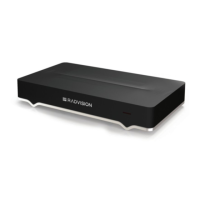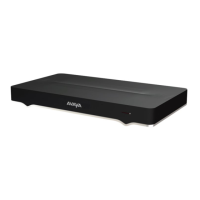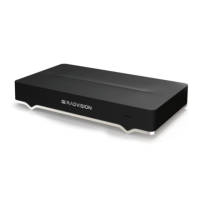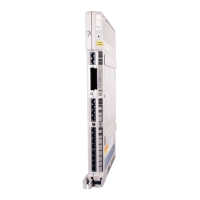Figure 77: Merging audio into two tracks and routing them to audio outputs
The web interface displays an interactive diagram of audio inputs to the left and outputs to
the right. Each entry is detailed in Table 41: Configuring audio output settings on page 169.
Table 41: Configuring audio output settings
Field Name Description
Inputs > Digital Audio Refers to digital microphones (or other digital audio device)
connected to the port via its mini-TOSlink connector.
Inputs > Echo Cancelled inputs Refers to all the microphones deployed in the room for
capturing voices. To avoid echo or feedback loops, you
cannot route room microphones to track 1, which is the
default track for the main monitor's speakers (HD1).
Inputs > Rx Remote Refers to the remote sound received from other endpoints
participating in a meeting.
Inputs > Analog Audio Refers to an analog microphone (or other analog audio
device) connected to the port via its 3.5mm jack.
Inputs > HD Refers to sound coming from an HDMI device.
Outputs > HD1/HD2 Refers to a monitor or other HDMI device connected to the
HD1 or HD2 port.
Outputs > Digital Audio Refers to a digital audio output device like an external
speaker connected to the port via its mini-TOSlink
connector.
Table continues…
Configuring Advanced Sound (Audio Output) Settings
August 2020 Deployment Guide for Avaya XT Series 169
Comments on this document? infodev@avaya.com

